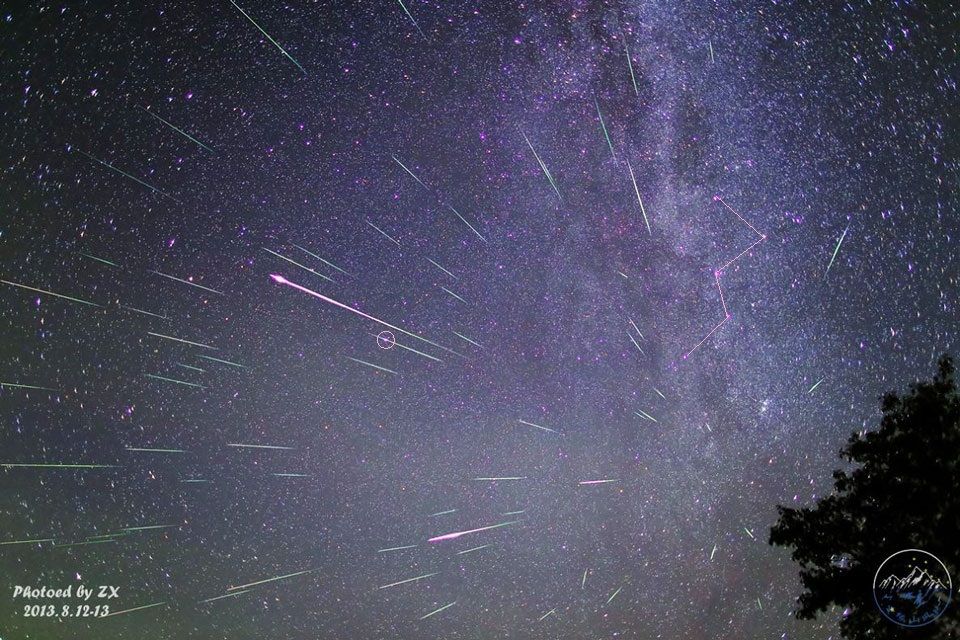
Posted on 08/20/2013 9:20:57 PM PDT by SunkenCiv
Explanation: Comet dust rained down on planet Earth earlier this month, streaking through dark skies in the annual Perseid meteor shower. While enjoying the anticipated space weather above Zhangbei Prairie, Hebei Province, China, astronomer Xiang Zhan recorded a series of 10 second long exposures spanning four hours on the night of August 12/13 using a wide angle lens. Combining frames which captured 68 meteor flashes, he produced the above composite view of the Perseids of summer. Although the sand-sized comet particles are traveling parallel to each other, the resulting shower meteors clearly seem to radiate from a single point on the sky in the eponymous constellation Perseus. The radiant effect is due to perspective, as the parallel tracks appear to converge at a distance. The next notable meteor shower may be the Orionids in late October.
(Excerpt) Read more at 129.164.179.22 ...
[Credit & Copyright: Xiang Zhan (Beijing Planetarium)]
I sat outside for four or five hours over two nights and saw four or five meteors. Of course, I had fairly bright skies in the “western ‘burbs” of Chicago, so I wouldn’t have seen most of the tracks in this composite. I did see one that had a “bulb” to it, like the one near the middle of the APOD. It wouldn’t have been this same one, though, because we are “180 degrees out of phase” with China. It’s all very mind expanding.

The peak nights were cloudy here but I saw a few during a midnight watch on days before and after the peak times .Say five meteors in two hours outside that were spent mostly observing stars to the south south.
Disclaimer: Opinions posted on Free Republic are those of the individual posters and do not necessarily represent the opinion of Free Republic or its management. All materials posted herein are protected by copyright law and the exemption for fair use of copyrighted works.